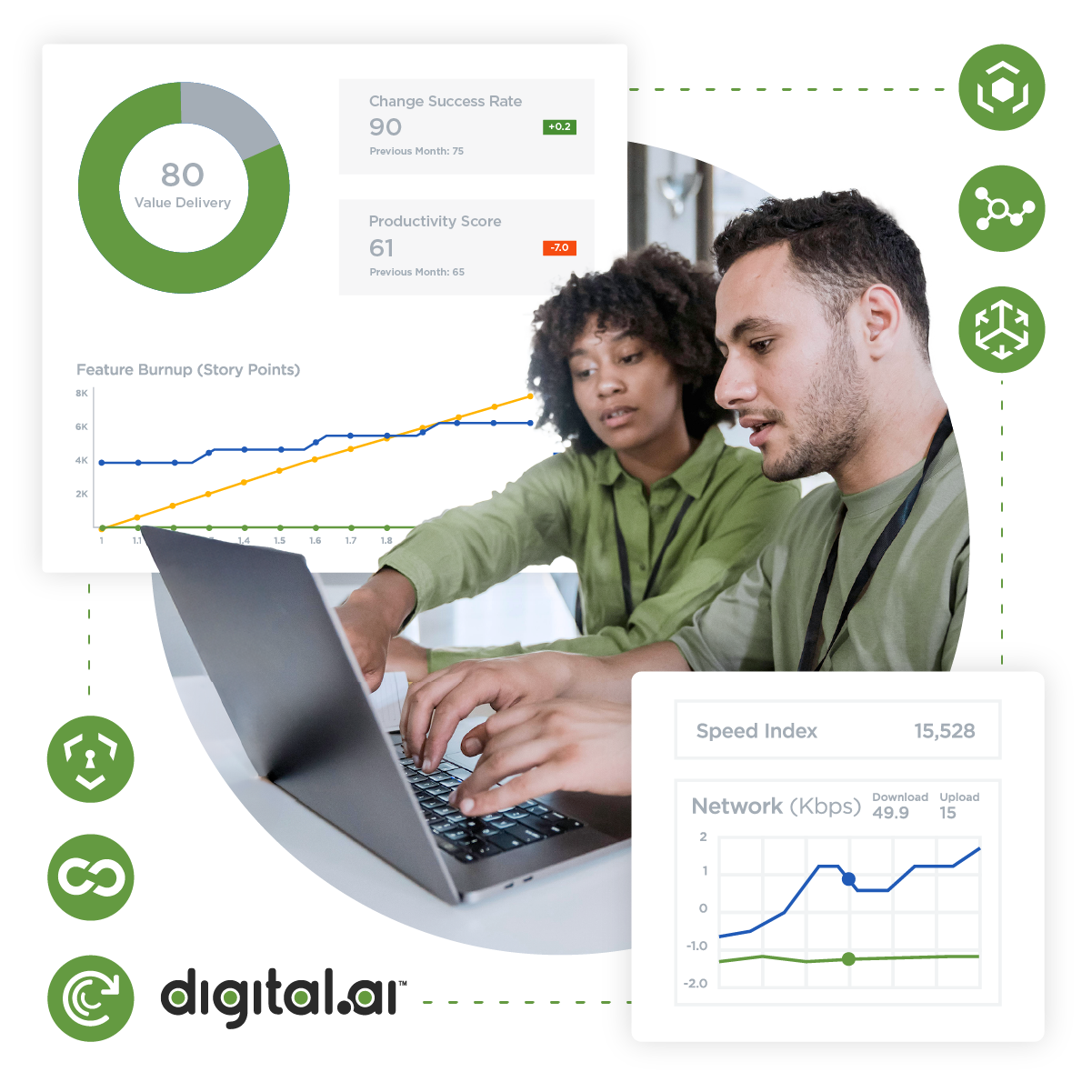Table of Contents
Related Blogs
What is Mobile Accessibility?
Mobile accessibility refers to the design and development of mobile apps intended for people with disabilities. This includes users with visual, auditory, motor, and cognitive impairments. Making apps accessible ensures that everyone can use your app and access the information and services it provides regardless of their abilities.
Importance of Mobile Accessibility
Mobile accessibility is crucial for several reasons:
- It is a legal and ethical obligation, as many countries have regulations mandating accessibility for digital products.
- Making apps accessible will expand your user base and include people with disabilities who may have been previously excluded.
- Accessible apps are often more user-friendly for everyone, regardless of ability, enhancing the overall user experience.
- Demonstrating a commitment to accessibility can improve brand reputation and customer loyalty.
Key Principles of Accessible Design
The key principles of accessible design are perceivability, operability, understandability, and robustness. Perceivability ensures that users can easily perceive information and user interface components. Operability guarantees that user interface components and navigation are usable. Understandability ensures that information and the operation of the user interface are clear and easy to understand. Finally, robustness ensures that a variety of user agents, including assistive technologies, can reliably interpret content.
Mobile Accessibility Standards and Guidelines
Overview of WCAG (Web Content Accessibility Guidelines)
WCAG is the most widely recognized set of guidelines for web accessibility. While primarily focused on web content, many of its principles also apply to mobile apps. WCAG outlines guidelines for making content perceivable, operable, understandable, and robust.
Mobile-Specific Accessibility Guidelines
In addition to WCAG, there are specific guidelines tailored to mobile accessibility:
- Mobile Accessibility Guidelines (MAG): Provide detailed recommendations for designing and developing accessible mobile apps on various platforms.
- Platform-Specific Guidelines: iOS and Android have their own accessibility guidelines, which outline platform-specific requirements for accessibility.
Legal and Regulatory Requirements
Many countries have laws and regulations that mandate accessibility for digital products, including mobile apps. Researching the specific legal requirements in your target markets is essential to ensure compliance. Some key regulations include:
- Section 508 of the Rehabilitation Act: This U.S. federal law requires electronic and information technology developed, procured, maintained, or used by the federal government to be accessible to people with disabilities.
- Americans with Disabilities Act (ADA): While not explicitly addressing digital accessibility, the ADA has been interpreted to include websites and mobile apps.
- European Union Accessibility Directive: This EU directive mandates accessibility for websites and mobile apps, with specific requirements for user interface, navigation, and content.
Tools for Mobile Accessibility Testing
Automated Testing Tools
Automated testing tools efficiently identify accessibility issues within your mobile app. Some popular tools include:
- Accessibility Insights for Web: A free browser extension and API that helps identify accessibility issues on web pages and mobile apps.
- axe: A powerful accessibility testing tool that can be integrated into your development workflow.
- WAVE Web Accessibility Evaluation Tool: A web-based tool that analyzes web content and provides feedback on accessibility issues.
- Digital.ai Continuous Testing: Enables accessibility testing of web and mobile applications on 1,000+ real browsers and mobile devices in the cloud.

Manual Testing Techniques
While automated tools are valuable, manual testing is essential to identify issues that automated tools may miss. Manual testing techniques involve:
- Screen Reader Testing: Using screen readers like JAWS, NVDA, or VoiceOver to evaluate how users with visual impairments experience your app.
- Keyboard-Only Navigation Testing: Ensures that users can navigate and interact with your app using only a keyboard.
- Color Contrast Testing: Verifying that text and images have sufficient color contrast to be readable.
- Touch Target Size and Spacing Testing: Ensuring that touch targets are large enough and spaced appropriately for easy interaction.
Screen Readers and Emulators
Screen readers and emulators allow you to simulate the experience of users with visual impairments. These tools identify and fix accessibility issues related to screen reader compatibility and keyboard navigation.
- JAWS: A popular screen reader for Windows.
- NVDA: A free, open-source screen reader for Windows.
- VoiceOver: A built-in screen reader on iOS devices.
- Android Accessibility Suite: A suite of accessibility tools for Android devices, including TalkBack, a screen reader.
Conducting Mobile Accessibility Audits
Setting Up Test Environments
To effectively test your mobile app’s accessibility, it’s crucial to set up diverse test environments that simulate various user conditions:
- Device and OS Compatibility: Test apps on a range of mobile devices (phones and tablets) and operating systems (iOS, Android) to ensure compatibility and accessibility across different platforms.
- Screen Reader and Assistive Technology Compatibility: Use popular screen readers like JAWS, NVDA, and VoiceOver to test how your app interacts with these technologies.
- Different Screen Sizes and Resolutions: Test your app on various screen sizes and resolutions to ensure that content is displayed correctly and is accessible to users with different visual impairments.
- Network Conditions: Simulate different network conditions (slow, fast, and intermittent) to assess your app’s performance and if any accessibility issues arise.
Developing Test Cases
Create a comprehensive set of test cases to cover all aspects of your app’s accessibility:
- Navigation: Test keyboard navigation, touch gestures, and voice commands to ensure users can easily navigate through your app.
- Content: Verify that text and images have sufficient color contrast, alternative text for images, and clear headings.
- Forms: Ensure form fields are labeled correctly, have appropriate input types, and provide clear error messages.
- Multimedia: Test the accessibility of videos and audio content, including captions, transcripts, and audio descriptions.
- Touch Targets: Verify that touch targets are large enough to be easily tapped, especially for users with motor impairments.
Prioritizing Accessibility Issues
Once you’ve identified accessibility issues, prioritize them based on their severity and impact on users:
- Critical Issues: Issues that prevent users with disabilities from accessing essential features of your app should be addressed immediately.
- Major Issues: Issues that significantly impair the user experience should be prioritized for quick resolution.
- Minor Issues: Issues that have a minimal impact on the user experience can be addressed in future updates.
Common Mobile Accessibility Issues
Text and Image Contrast
Insufficient color contrast between text and background can make reading content difficult for users with visual impairments. Ensure that text and images have adequate color contrast to be easily discernible.
Screen Reader Compatibility
Screen readers rely on semantic HTML structure and appropriate use of ARIA attributes to accurately interpret and announce content. Common issues include:
- Missing or Incorrect Labels: Ensure all interactive elements, such as buttons, links, and form fields, have clear and descriptive labels.
- Lack of Alternative Text: Provide alternative text for images to convey their meaning to screen reader users.
- Poorly Structured HTML: Use semantic HTML elements to structure your content, making it easier for screen readers to understand.
Touch Target Size and Spacing
Touch targets, such as buttons and links, should be large enough to be easily tapped, especially on smaller screens. Avoid placing touch targets too close together, as this can lead to accidental taps.
Keyboard Navigation and Focus Indicators
Ensure that your app is fully navigable using a keyboard. Key points to consider:
- Logical Tab Order: The tab order should follow a logical sequence, allowing users to navigate through the app efficiently.
- Clear Focus Indicators: Visual indicators show which element is currently focused, making it easier for users to track their position.
- Keyboard Shortcuts: Consider providing keyboard shortcuts for frequently used actions to speed up navigation.
Techniques for Improving Mobile Accessibility
Designing Responsive Interfaces
Responsive design ensures that your app adapts to different screen sizes and orientations, providing a consistent and accessible experience across various devices. Key considerations include:
- Flexible Layouts: Use flexible layouts that adjust to different screen sizes, avoiding fixed-width designs.
- Touch-Friendly Interactions: Design touch-friendly controls that are easy to tap and manipulate.
- Clear and Concise Content: Adapt content to different screen sizes, ensuring it remains legible and understandable.
Enhancing Text Legibility
Text legibility is crucial for users with visual impairments. Consider the following techniques:
- Sufficient Font Size: Use font sizes that are easy to read, especially on smaller screens.
- Adequate Color Contrast: Ensure sufficient color contrast between text and background to improve readability.
- Readable Font Styles: Choose fonts that are clear and easy to read.
- Line Spacing: Use appropriate line spacing to enhance readability.
Ensuring Interactive Element Usability
Interactive elements, such as buttons, links, and form controls, should be easily identifiable and usable. Key considerations include:
- Clear Labels: Provide clear and concise labels for all interactive elements.
- Consistent Visual Design: Use consistent visual design for interactive elements to make them easily recognizable.
- Meaningful Feedback: Provide clear visual and auditory feedback when users interact with elements.
- Sufficient Touch Target Size: Ensure touch targets are large enough to be easily tapped.

The Role of User Feedback in Accessibility Testing
Incorporating Feedback from People with Disabilities
Involving people with disabilities in the testing process is crucial for gaining valuable insights into their experiences with your app. Consider the following:
- User Interviews: Conduct interviews with users with disabilities to understand their specific needs and challenges.
- Focus Groups: Organize focus groups to gather feedback from multiple users at once.
- Surveys: Use surveys to collect quantitative and qualitative data about user experiences.
Usability Testing with Assistive Technology Users
Observe how users with disabilities interact with your app using assistive technologies like screen readers and voice control. This will help you identify areas where the app may be difficult to use or inaccessible.
Continuous Improvement Through Iterative Testing
Accessibility testing should be an ongoing process, not a one-time event. Regularly conduct accessibility audits and usability tests to identify and address issues. Consider the following:
- Regular Accessibility Audits: Schedule regular accessibility audits to monitor your app’s accessibility over time.
- User Feedback Loops: Implement a feedback mechanism to encourage users to report accessibility issues.
- Iterative Development: Use the insights gained from testing to make continuous improvements to your app’s accessibility.
Following the guidelines and best practices outlined in this guide helps organizations create mobile apps that are accessible to everyone, regardless of their abilities. Remember, accessibility is not just a legal requirement; it’s a fundamental aspect of inclusive design that benefits all users. Prioritizing accessibility creates a more inclusive digital world where everyone can participate and thrive.
Scale Accessibility Testing
Explore
What's New In The World of Digital.ai
Guide: Mobile Automation with Appium in JavaScript
Learn to automate mobile apps with Appium and JavaScript. Our guide includes setup, test writing, and advanced features to streamline your testing process.
Digital.ai Testing Now Supports iOS 26 Beta
Digital.ai Testing now supports iOS 26 (Beta). Discover the new features and see how it works with a demo below.
Beyond Automation: How AI is Transforming Enterprise Software Delivery
Discover how AI in software delivery is revolutionizing enterprise software by automating tasks, enhancing UX, and transforming the SDLC.




